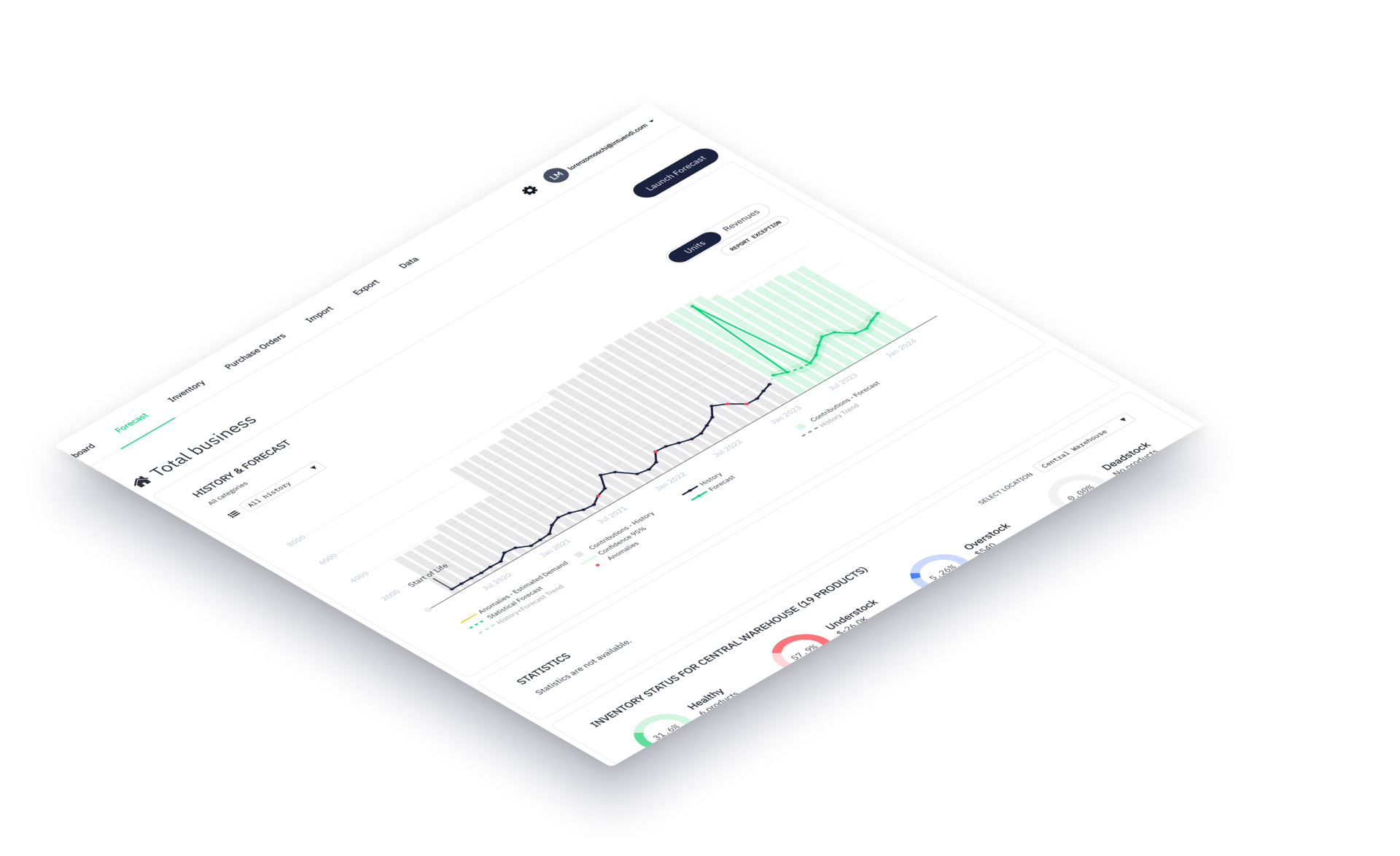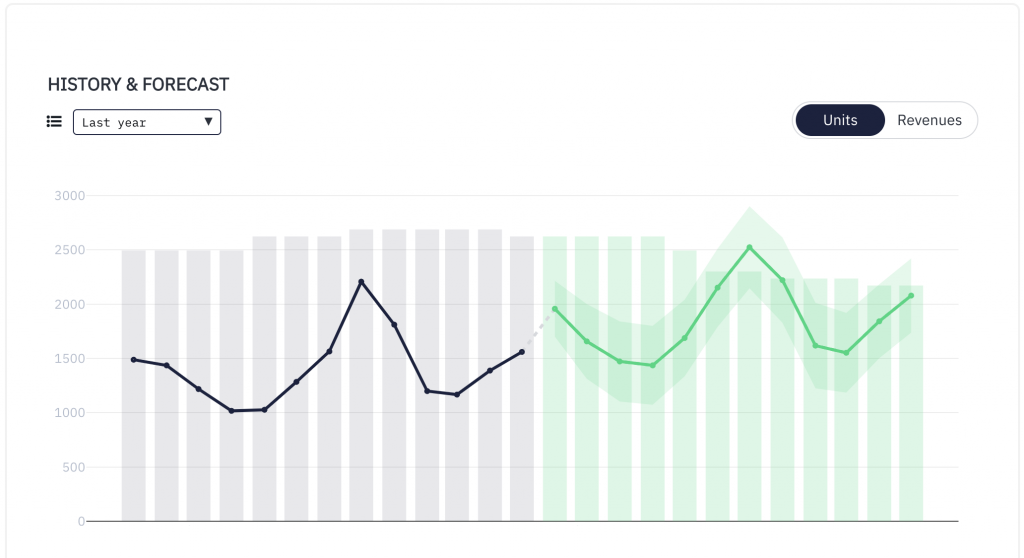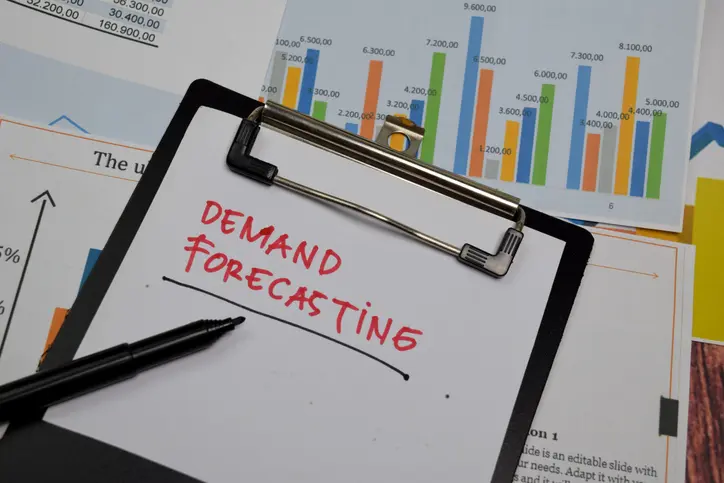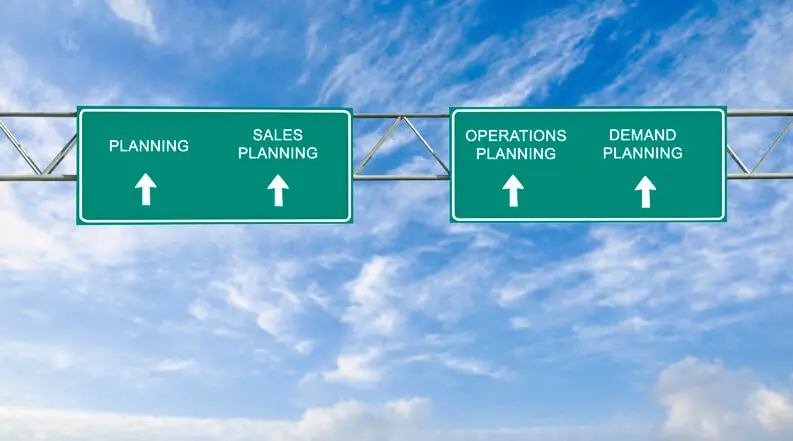Demand forecasting, helping businesses to make informed stocking decisions based on research on consumer trends and demands, is a necessity in optimising inventory management. This article will be assessing and explaining the importance of demand forecasting, the different ways in which to forecast demand and the steps taken to achieve this, as well as how to calculate demand forecasting. But first, we must answer the question, ‘What is Demand Forecasting?’
What is demand forecasting?
Demand forecasting is the process of using predictive analysis software reading historical data to determine consumer trends to aid in assessing which products and services are in high demand, and which are becoming more obsolete. The acquisition of this data supports businesses in their decision-making process of which products and services to keep, which to move away from, and which new products and services might do well within the consumer market. In essence, with demand forecasting, companies are able to better optimise inventory management by predicting future sales more accurately and efficiently.
However, demand forecasting is not only limited to its ability to offer insight into what products and services will do well in the consumer market and how to manage this inventory, it also provides numbers and statistics into what quantities companies should prepare for selling. This allows for more accurate production planning and workforce scheduling, as more information is provided on the number of products to be produced and sold, and thus provides more detail into the workforce numbers that need to be allocated per phase of production.
What are the Three Types of Forecasting?
The action of forecasting demand is no small feat and can be fairly daunting when approaching it at first. Let us dissect three different types of demand forecasting to help assess which option is best for your business and its operations. These are qualitative forecasting, quantitative forecasting and causal forecasting.
Qualitative Demand Forecasting: Qualitative research is generally more dependent on human interactions and opinions, and the qualitative method to forecast demand is no exception. This method does not use quantifiable data, and instead looks at expert opinions, market research and surveys. These techniques are more reliant upon the expertise and judgement of individuals or groups with knowledge and experience in the industry or market being forecasted. Useful for providing insights into consumer behaviour, trends and preferences, qualitative forecasting is often used when historical data is unavailable or when significant changes in the market environment make historical data unreliable. With its sole reliance on unreliable factors such as bias and subjectivity, qualitative forecasting methods can be used in combination with quantitative demand forecasting methods to better forecast market demands and trends.
Quantitative Demand Forecasting: This method predicts future demand using historical data and statistical analysis. This approach relies on the assumption that past trends and patterns in demand can be used to make accurate predictions about future demand. The techniques associated with quantitative demand forecasting include time series analysis, regression analysis, and econometric modelling, making use of historical sales data and other relevant variables to develop mathematical and statistical models to forecast future demands. With this technique’s reliance upon objective data, it can be tested for accuracy and allows for the identification of specific factors driving demand. However, it does not always account for major changes affecting consumer demand, or current consumer preference. It is thus recommended to be used in conjunction with qualitative demand forecasting techniques to better predict future demand.
Causal Forecasting: A method of demand forecasting that identifies and analyses the underlying causes of change in demand, which are assumed to result from various external factors. These techniques make use of statistical analysis to identify the relationship between demand and various causal factors. Some causal factors may include: changes in price, promotions, and advertising. This allows for the identification of specific factors driving changes in demand, allowing businesses to make more informed decisions about their chosen marketing strategies. These results can additionally be used to test the effectiveness of different marketing campaigns or pricing strategies. However, causal demand forecasting is not without its limitations. It has proven difficult to identify all relevant causal factors and accurately measure their individual impact on demand. There is also the assumption that the relationship between demand and causal factors will remain stable over time – which we already know that it will not. The best solution for producing more reliable forecasts is to use this forecasting method in combination with qualitative and quantitative methods.
Providing a more in-depth analysis of how the types of forecasting are used, here is an example of how qualitative demand forecasting might be used:
A company is considering introducing a new product to the market and needs to predict how much demand there will be for it. They first conduct market research for an improved understanding of consumer preferences, needs and behaviour related to the new product. Some of these techniques might include focus groups and surveys with potential customers to gather their opinions and feedback. The company might then consult with industry experts who can provide insights into any and all relevant factors that have the potential to impact the demand for the new product. Based on the insights gathered during the research, the company is able to develop a set of demand scenarios which reflect different possible consumer outcomes based on different assumptions on the market at the time. These findings can be further cross-referenced with corresponding quantitative data to provide more accurate readings on how to approach introducing the new product to the market. The culmination of this information can be used to make informed decisions about production, marketing and sales strategies for the new product.
What are the Steps in Demand Forecasting?
In the previous example, general steps for demand forecasting were offered. Let us take a deeper dive into the demand forecasting process:
- Firstly, objectives need to be set by the company. Are they wanting to introduce a new product into the market like the previous example, or are they trying to assess the relevance and demand for an already existing, older product? Specific parameters such as time period, product, service or category and customer pool need to be defined and set.
- Now to collect and record data! Once your chosen method and techniques of forecasting demand are decided, the collection and recording of data can begin.
- The purpose of collecting and recording this data is to analyse it. The next step is thus measuring and analysing the retrieved data. Trends are patterns over various time periods that will be looked at to help gain deeper insights into specific consumer trends and when these trends occur.
- Planning: Once all the necessary data is retrieved, processed and analysed, future plans can be set in place. This allows companies to set a budget that more accurately reflects the workforce numbers, the production time and the production quantity that is necessary for consumer market research.
How to Calculate Demand Forecasting with AI
Quantitative and qualitative forecasting, as well as causal factors analysis, all play a fundamental role when it comes to calculating predictions and implementing the planning process. Advanced demand planning tools like Intuendi rely on a mix of best-in-class technologies and deep knowledge of processes to packaging solutions that deliver value and results to clients.
What really sets a solution like Intuendi apart from traditional tools is the ability to leverage AI to compute a more accurate and informed forecast. Mastering the state of the art of Time Series Analysis techniques, including the capability to add sophistication to even the simplest of algorithms, and developing -through the years- the AI that is required to decide which one should be used to forecast a new or existing product or sales channel, is the foundation of a modern data-driven planning process. An accurate forecast can serve as a great starting point, but you can’t implement a successful demand planning routine without real-time visibility of products’ stockout and understocking risks. That’s, again, where AI comes into play: the ability to identify product classes, trends and seasonality patterns, as well as analyses of the impact of the external context on future demand helps compute not only better predictions, but empowers sales and operations teams with the right timing to make the best decisions with the lowest risks.

Long story short, AI-driven products like Intuendi compute forecasts that deliver accuracy, great-timing, and reliable results. Contact us today for a free deep dive into AI demand forecasting.
Example of demand forecasting
ACME trading company wishes to improve their efficiency in its procurement and supply process, so they decided to apply demand forecasting techniques to their business.
Following the above steps they first of all defined their objectives: reduce stockouts while maintaining a lean inventory. Within their ERP system, their sales history for the last three years was well recorded and used this data to forecast their demand. By analysing this data they discovered trends, seasonalities and patterns in their sales and so began adjusting and planning their procurement of goods to match this demand. The result of course was a drastic reduction in stockouts against only a slight increase in the average inventory value during the peak season.
Why is Forecast Demand Important?
Demand forecasting’s allowance for anticipating future demand is an important process for companies. It is essential for production planning, inventory management, deciding on a marketing strategy, and better financial planning and also allows for a competitive advantage. Accurate demand forecasts help businesses to avoid over or underproduction and an accumulation of inventory while ensuring that products are available when customers want to buy them. This additionally allows for a more in-depth breakdown of workforce scheduling, resource allocation, and therefore, overall budget. It enables businesses to tailor their marketing efforts to target specific customer segments, which has great potential to lead to an improved reputation for reliability and customer service. With this extensive list of benefits, it is no wonder that demand forecasting is such a crucial tool for businesses to improve their management of operations to more effective and efficient heights!






